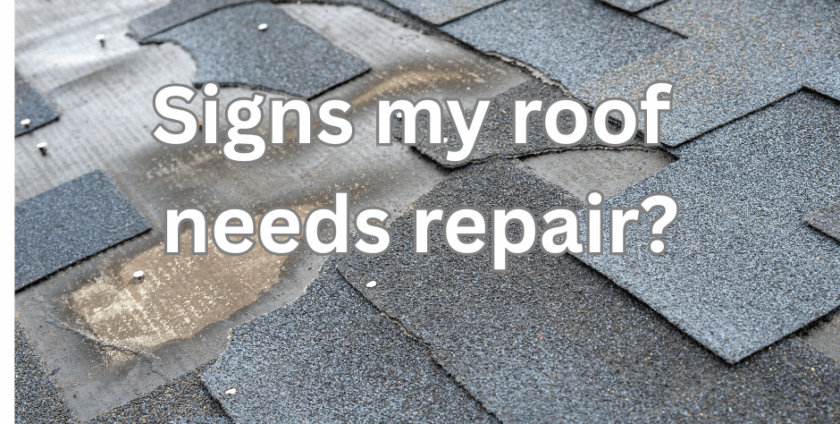
Top 25 Most Searched Residential Roofing Questions in Ohio #20
What Are the Signs My Roof Needs Repair?
As an Ohio homeowner, your roof is your home’s primary shield against our state’s diverse and often challenging weather. From scorching summer sun and severe thunderstorms to heavy winter snow and damaging ice dams, your roof endures a lot. Ignoring the subtle (and sometimes not-so-subtle) signs of roof damage can lead to much larger, more expensive problems down the line – think interior water damage, mold growth, and even structural compromise.
Being proactive about roof inspection and understanding the common roof repair indicators is key to protecting your investment. So, how can you tell if your Ohio roof needs attention? Let’s explore the crucial signs to look for.
Exterior Clues: What Your Roof is Telling You from the Outside
A visual inspection from the ground (or with binoculars for a closer look) can reveal a lot about your roof’s health.
- Missing or Damaged Shingles: This is perhaps the most obvious sign. High winds, hail, or even just age can cause shingles to blow off, crack, curl, blister, or buckle. If you see bare spots on your roof or shingles that are no longer lying flat, your home is vulnerable to water intrusion. Pay close attention to the edges and valleys of your roof, as these are often vulnerable points.
- Granule Loss: For asphalt shingle roofs, the tiny, sand-like granules protect the underlying asphalt from UV rays and wear. If you notice an accumulation of these granules in your gutters or downspouts, it’s a strong indicator that your shingles are aging and deteriorating. Extensive granule loss means your shingles are losing their protective capabilities.
- Sagging or Uneven Roofline: Stand back from your home and observe your roof’s silhouette. If you notice any dips, sags, or uneven areas, this is a serious red flag. It could indicate compromised decking, weakened rafters, or significant water damage beneath the surface, requiring immediate professional assessment.
- Damaged or Corroded Flashing: Flashing is the metal material installed around chimneys, skylights, vents, and in valleys where roof planes meet. It acts as a watertight seal. If you see flashing that is bent, rusted, cracked, loose, or appears to have gaps, it’s a prime entry point for water. Many roof leaks in Ohio originate from flashing issues.
- Clogged or Damaged Gutters: While not strictly part of your roof, properly functioning gutters are essential for directing water away. If your gutters are overflowing, sagging, pulling away from the fascia, or filled with shingle granules and debris, it can lead to water pooling on your roof or overflowing onto your home’s siding and foundation, causing severe problems.
- Moss, Algae, or Fungi Growth: Dark streaks, green patches of moss, or other organic growth on your roof can indicate that moisture is being trapped, which can accelerate the deterioration of roofing materials. While often an aesthetic issue, prolonged moisture can lead to rot and compromise shingle integrity.
- Pooled Water (especially on flat roofs): If you have a low-slope or flat roof, standing water (known as “ponding”) for more than 48 hours is a concern. This can indicate drainage issues or sagging areas that need to be addressed to prevent leaks and structural damage.
Interior Clues: When the Problem Reaches Your Home’s Interior
Sometimes, the first signs of roof repair needs manifest inside your Ohio home.
- Water Stains on Ceilings or Walls: This is often the most alarming sign. Yellow, brown, or discolored spots on your ceilings, walls, or even around windows and skylights are undeniable evidence of a roof leak. Remember that water can travel, so a stain might appear in a different location than the actual leak source.
- Dripping Water: The unmistakable sound or sight of water dripping from your ceiling during rain is an obvious sign your roof has failed. Immediate action is needed to prevent further damage.
- Damp or Moldy Attic: Head up to your attic, especially after a storm. Look for any signs of moisture, water stains on the underside of the roof deck or rafters, or wet insulation. A musty odor is also a strong indicator of trapped moisture and potential mold or mildew growth. Check for daylight coming through the roof boards, which points to holes or gaps.
- Higher Energy Bills: If your heating or cooling bills are inexplicably rising, a compromised roof could be contributing. Damaged or poorly ventilated roofs can lead to significant energy loss, as conditioned air escapes and outside air infiltrates.
The Age Factor: An Important Consideration for Ohio Roofs
The age of your roof is a significant factor. Most asphalt shingle roofs in Ohio have a lifespan of 20-30 years, depending on the quality of materials and installation. If your roof is approaching or exceeding this age, even without obvious damage, it’s wise to consider a professional roof inspection to assess its remaining lifespan and plan for a future roof replacement. Metal roofs, on the other hand, boast a much longer lifespan, often 50-70 years, but still benefit from periodic checks.
Don’t Wait: Call Your Ohio Roofing Experts
Ohio’s weather doesn’t wait for your convenience, and neither should you when it comes to roof repair. If you notice any of these signs, it’s time to contact a Rhino Metal Roofing. A professional inspection can accurately diagnose the issue, provide a detailed roof repair estimate, and recommend the best course of action – whether it’s a minor repair or a full roof replacement. Protecting your home starts with recognizing the warning signs and acting swiftly.
- By: admin
- 0 comment
